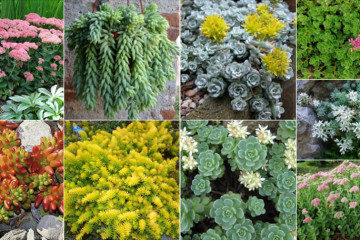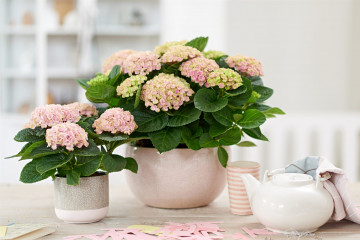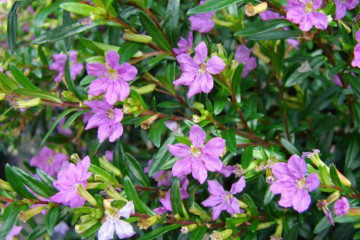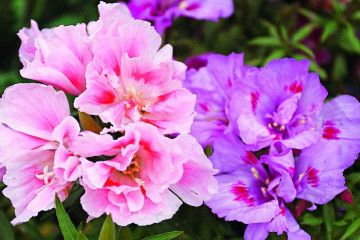Planting and caring for a rose at home
Content:
Indoor roses are beautiful ornamental plants that are very popular with flower growers. To succeed in growing a crop, she needs to create suitable conditions. Planting a rose at home and caring for it has a number of features.
Growing and caring for a room rose at home
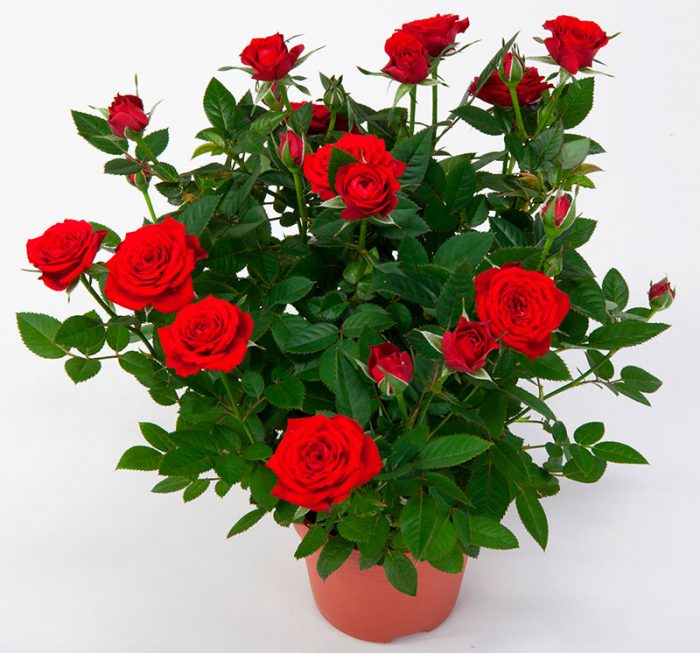
To achieve the lush flowering of a room rose, she needs to provide quality care.
Can a rose be grown at home? Of course it is possible. However, many people believe that this does not take much effort. In fact, for a lush and abundant flowering, a rose needs to be well looked after.
Many people buy a plant that blooms. That is why he needs to provide thorough care for successful adaptation. So that the efforts are not in vain, the plant needs rest. It is strictly forbidden to immediately transplant a purchased rose into a new pot. She needs to get used to the room climate.
It is imperative to take care of the optimal parameters of temperature, humidity, watering. Adaptation can take 2 weeks.
Special fertilizers will greatly benefit the young plant. These can be purchased at any gardening store. In this case, it is important to ensure that the flower does not dry out. Therefore, it must be watered in a timely manner.
When growing a crop, it is important to control the absence of diseases and parasites. To do this, you need to periodically inspect the foliage of the rose bush. By following simple recommendations, you will be able to get a beautiful flower.
How to keep a room rose after purchase
Immediately after buying Chinese or other types of indoor roses, you must adhere to simple recommendations:
- If the plant is wrapped in a package, it must be opened immediately. The film provokes a violation of air exchange, which causes the development of fungi.
- Dry shoots and wilted foliage should be trimmed with garden shears. It is also permissible to use a pruner.
- Cut the buds of the purchased rose. They are impregnated with special substances that harm the plant.
- Use insecticides after transplanting. They will protect the plant from parasite attacks.
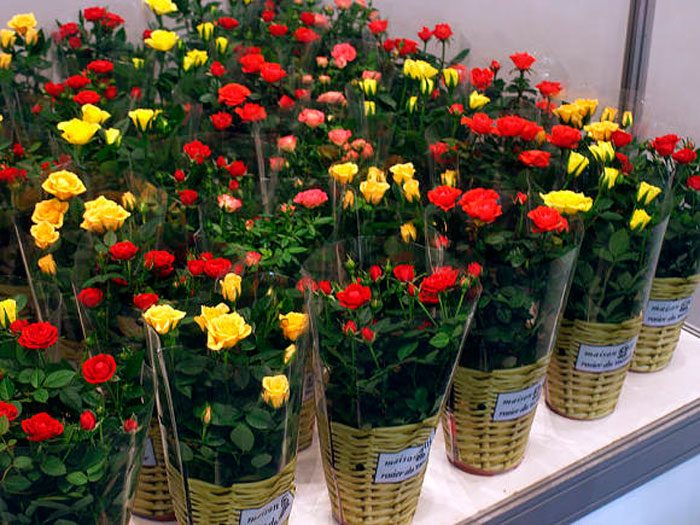
Immediately after purchasing the plant, you need to remove the packaging and cut the bush.
Transplanting a room rose into a pot
To plant a culture in a new pot, it is worth preparing a special substrate. To do this, mix turf, leafy soil, humus and sand. For transplanting a culture, it is worth taking a pot with a larger diameter. It is definitely worth making drainage holes in it. They ensure the outflow of water and respiration of the root system.
How to plant a rose in a pot? The step-by-step transplant process looks like this:
- Water the rose and carefully remove from the pot. Remove large lumps of old soil.
- Dip the plant in a container of warm water and gently rinse off the soil. Small roots can be rinsed out with a shower jet.
- Examine the roots and remove dry and rotten fragments.
- Place a small amount of expanded clay and earth at the bottom of the pot.
- Place the plant in the center of the pot and spread out the roots.
- Gradually add soil and tamp it gently.
If you have a well-developed root system, the bush can be watered immediately after planting. With a small number of roots or damage to them with rot, it is possible to moisten the soil only after a few days. It is allowed to feed the bushes only after 2 months.
Experienced gardeners can propagate the rose by cuttings. To do this, it is permissible to use a stem from a bouquet or prepare it from a street plant. However, for beginners, it is better to buy a ready-made bush.
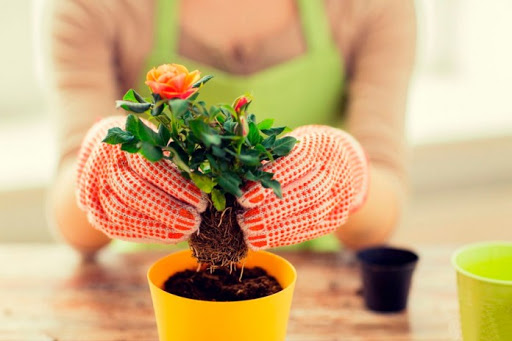
A plant transplant should be carried out taking into account the recommendations of specialists.
How to care for a room rose at home
Many people are interested in how to grow a rose at home. Correct planting is not enough - the culture needs follow-up care. To do this, she needs to provide ideal conditions.
Illumination and temperature conditions
It is recommended to grow a rose in a room with a temperature of +18 .. + 25 degrees. This plant needs fresh air. Therefore, in warm weather, it can be taken out onto the balcony if a rose is grown in an apartment. In autumn and winter, the room should be systematically ventilated.
Watering rules and humidity
It is worth watering the culture with settled water. It should be at room temperature. When watering with too cold water, there is a risk of plant death.
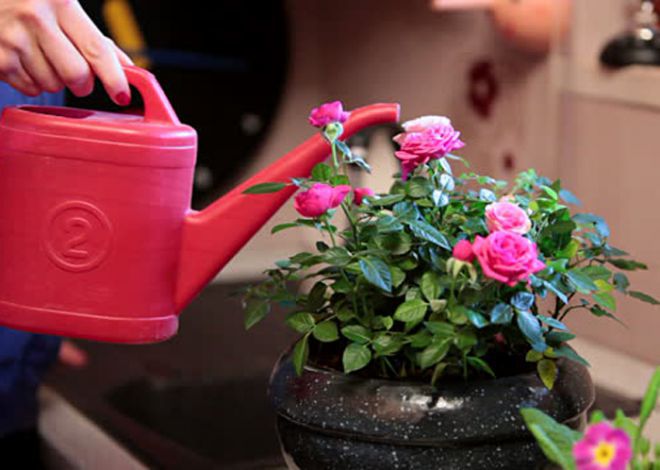
The plant needs timely watering.
Top dressing and soil quality
To feed the crop, it is worth using complex fertilizers. It is recommended to apply them at intervals of 15-20 days - from spring to autumn.
Flower container size
The crop pot must be selected based on the size of the roots. In this case, the flower should be planted in a container 2 cm larger than the previous one.
Pruning and replanting
For a beautiful and uniform formation of the culture during the flowering period, it is recommended to systematically trim it. Shoots should be regularly shortened when they are pulled out in the winter. You should also cut dry and weakened branches.
How a home rose blooms
Under optimal conditions, a home-grown rose can bloom every 8-9 weeks. In this case, the plant is decorated with small flowers of different shades.
Diseases and pests of a room rose
To understand how you can grow a rose in a pot at home, it needs to provide protection from diseases and pests.
The rose dries
The plant often dries up in winter or summer. In warm weather, the leaves of the flower evaporate a lot of moisture. In this case, it is necessary to moisten the soil in order to avoid complete drying out.
The reasons for drying out include the following:
- death or damage to the roots, which leads to a violation of the assimilation of useful elements;
- improper or insufficient watering;
- increased dryness of the air;
- location of culture near heating sources.
When the first signs of problems appear, the plant needs to be watered. In this case, the pot should be placed in a pallet filled with wet expanded clay. Periodic spraying of the crop is of no small importance.
The leaves of the rose turn yellow
Yellowing of foliage can be caused by such factors:
- sunburn;
- watering with too cold water;
- exposure to drafts;
- excess moisture;
- dryness of the substrate.
In the absence of diseases and parasites, a change in the shade of the foliage may be associated with a deficiency of useful elements. If the leaves turn pale green and turn yellow from the midrib, this indicates a lack of nitrogen. Potassium deficiency can be suspected if stains appear.If the yellowness is localized between the veins, this indicates a lack of iron.
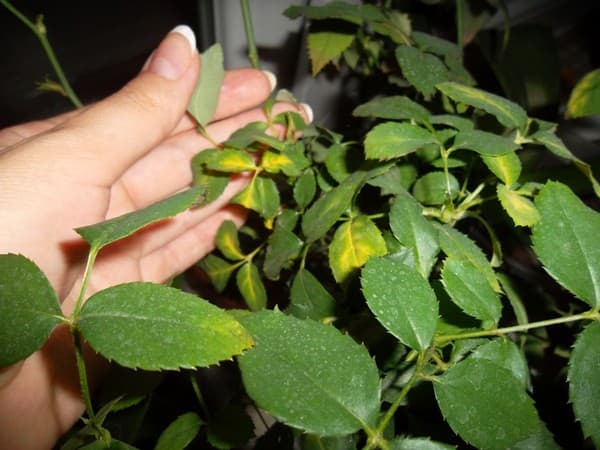
Yellowing of the leaves may be due to a lack of nutrients.
The rose darkens, withers, leaves fall
If the dropping and dryness of the leaves indicate an increased dryness of the substrate in the container, then wilting is associated with the following factors:
- freezing of the bush;
- the appearance of fungal infections;
- parasites;
- viral diseases;
- watering the bush with cold liquid.
Sometimes dryness and falling leaves indicate attacks by spider mites. To avoid such problems, it is worth treating the culture with special preparations on a monthly basis.
Growing roses indoors is not easy, but quite exciting. To achieve results, it is necessary to strictly follow the recommendations of specialists and create optimal conditions for the plant.

